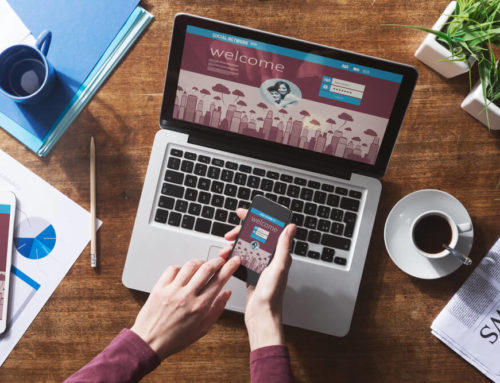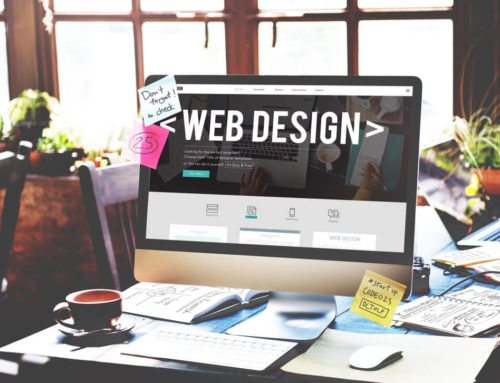Every year, technology advances and with it, user interfaces and website designs evolve. For the greater part of the past decade, website owners and designers worked together to please Google’s search ranking algorithm.
Wisely so — the search engine essentially required basic web elements in order for sites to rank — sensical functionality, quality content, buttons that work, hyperlinked pages, simple navigation. These basic website building blocks became the foundation for most websites. Thanks to these implementations, consumers are able to browse websites without complications and with a general understanding of where to find specific content on pages and what to expect to find when arriving at the URL address.
Now, we’re in an exciting design space. Website designers have the algorithm-preferred building blocks down pat and consumers have a solid understanding of web navigation. Finally, designers can return to their artistic motivations and begin taking creative liberties.
The bursts of creativity you will see in 2020 will be small and sparse to start as designers sample ideas with consumers. Hopefully, these changes continue throughout the year and leave us with a more creatively populated internet, soon.
Let’s take a look at what design trends are popping up this year, why you should care and how to incorporate a few into your pages.
Why Follow Web Design Trends
Following design trends serve so many benefits. By tracking who is implementing change, which features are evolving and how designers are pushing boundaries, your design team gets the motivation and creative energy to follow suit and adapt your website to current trends that are leading the market, too.
- Competition awareness — Stay on top of trends to keep up with industry competitors.
- Motivation to create — Get inspired by other brand’s innovative designs (in your industry or another vertical)
- Idea genesis — Come up with new ways to apply evolving trends to your specific consumers’ behavior.
- Marketing awareness — Keep a constant beat on how marketing is evolving and where your brand falls in the larger picture.

Why Change Your Website for New Trends in Web Design
Marking your company as a creative leader speaks volumes about your brand. Consumers immediately know they can rely on you to evolve with technology and modern times. Let’s look at a few other benefits of updating your site to include current trends:
- Position your brand as an industry leader by staying up to date with design trends
- Project your brand as a creative powerhouse with fresh design integrations
- Stamp your knowledge of tech and tech evolution on the web
- Become a marketing leader in your industry that consumers trust and competitors follow
Web Design Trends 2020
Some of this year’s trends include staying on brand with consumer engagement functions and fancying up fonts. Check out the list below for the full preview.
Dark Mode
Dark mode has slowly made its way to the new normal. The dark mode is easier on the eyes, making it a wise design option in a decade riddled with increased awareness of health and well-being. If you provide or plan to provide a dark mode option, spend time ensuring all features flow and promote optimal user design functionality.
Long Image Crops
As more consumers search for products from their phones, a shift in images is moving toward long image crops to promote the best viewing experience.
New Fonts
Alas, we are adding new fonts to websites. As you choose from font options with more flair and personality, keep selections limited to only 2–3 to ease consumers into the new look.
Minimalism
Less is more is 2020’s new design motto. Where you can offer a thousand words with pictures, choose an on-brand, high-quality image; where you can offer three logos that communicate three pages of services explained, create three images that effectively express what your brand offers. Provide all essential information on the surface without going into detail or adding clutter. Again, less is more.
Foldability and Device-Centric Design
If your consumers use foldable devices, provide design options that adapt to their viewing experience. As the adaptable design is a large endeavor, be sure to adequately research your consumers and their typical viewing devices.
Micro-Interactions That Match Your Branding
A big trend that is unfolding is the integration of micro-interactions, such as ‘liking’ a blog or post or photo. These interactions are useful — they immediately indicate what works for consumers, and promote engagement, but they don’t always match brand aesthetic. Finding ways to match interaction design with web design will continue to unfold in 2020.
How to Incorporate the Latest Web Design Trends
Staying up-to-date on web design trends is one thing; figuring out how to implement them is another. Making changes slowly and rolling them out one feature at a time are great ways to slowly adjust your consumer expectations and behavior. Let’s look at a few tips for success.
How to Include New Trends
Incorporating new trends may seem overwhelming, but it doesn’t have to be. Take the integration step by step, and preview to a small batch of consumers for the best results.
- One feature at a time: The most effective way to update website design is to integrate one element at a time (as long as it doesn’t totally compromise UX). This way, your team can calmly fix the bugs and glitches associated with that respective element, staying in control, competent and efficient.
- Preview back end: Always preview the site with the new design features on the back end. This is an essential “test” to run before publishing.
- Beta-test the new site: Instead of publishing the new site to everyone, publish it for a select group. This will provide an opportunity to identify errors, glitches, and features that make navigation difficult.
- Track consumer behavior: Set up a tracking system to identify how consumers navigate and spend time on the site with the new features. Tracking is an ongoing task for optimal results.
- Analyze and use data: After you pool a significant amount of data, it’s time to look at it closely and create a story. Based on data, you might choose to add more of a particular design or remove one altogether.
- Ask for feedback: Be confident as you reach out and ask your audience for feedback. Request this information in the context of enhancing their experience with your brand.

Hire a Professional
When determining workloads and goal trajectories, outsourcing a professional design team might be worth the investment. Experienced teams know which tools you need to stay updated, exceed audience expectations and run with new design ideas without compromising functionality. If you have a proficient design team, consider a consultation from an outside firm.
Comment to Let Us Know About Your Experience
Have you run any of these new trends on your website? If so, let us know how it went! Additionally, let us know about any tips you have to share on “updating” your site according to design trends.
Rosy Strategies
At Rosy Strategies, we help our clients identify where they need improvement and updates in web design. Alongside discovering opportunities for trend implementation and growth, we provide confident design and structural analysis packages so that you can experiment with up-and-coming design aesthetics. To learn more about what we offer and which software platforms are best suited for your needs, reach out to our team, today.










